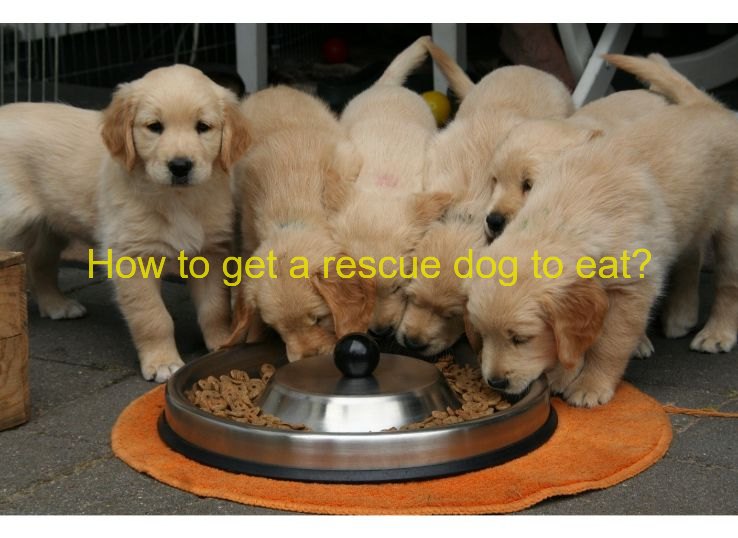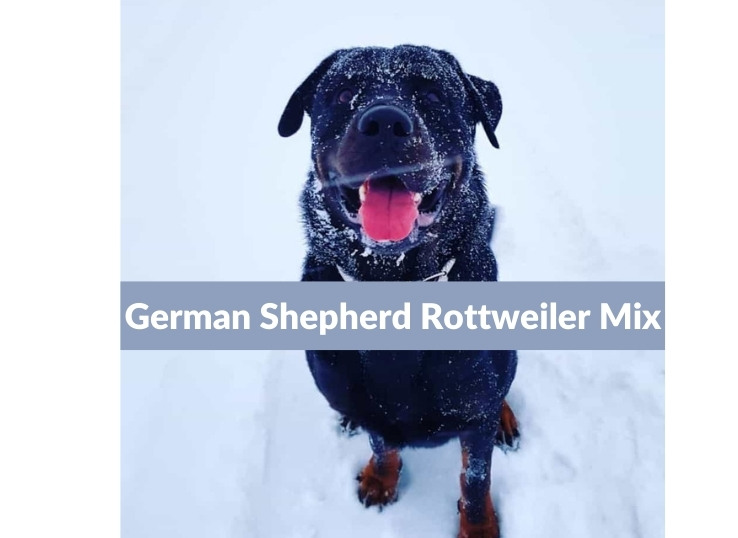How to get a rescue dog to eat? Top 7 Steps

Dogs adopted or rescued recently are likely to experience eating problems. Getting the dogs to eat is one of the biggest challenges. Often, a dog that has been adopted is unable to eat after adoption if its past is unknown. In this article, we will teach you how to get a rescue dog to eat?
Table of Contents
How to get a rescue dog to eat? 7 Easy Steps
Initially, a dog may not eat after moving into a new home. Give them some time to become accustomed to the new surroundings. There are several reasons why we lack appetite, including environmental changes, stress, depression, illness, food allergies, and changes in diet. Find out how to get a rescue dog to eat by following our guide.
-
Find out why
It is completely normal and expected, to some degree, that nervousness can result in a lower appetite. In the first six hours after bringing your rescue dog home, do not worry if the dog barely takes a sniff after filling his/her bowl. We suggest leaving the food out so that when they feel more comfortable, they can return to it.
In the case that they haven’t eaten anything after 18-24 hours, then perhaps it is worth checking into it further. Consult your veterinarian as soon as possible. Likely, they are just adjusting, and nothing is wrong, but avoiding danger is better than not doing so.
-
Check for sores or infections in the mouth.
Perhaps your dog is not eating well, or he is hesitant to eat because he simply cannot. Sores or teeth that are rotten or damaged may be the cause of your rescue dog’s condition. Even an infection could be causing him pain and preventing him from eating. If the behavior persists even after a visit to the vet, then go back to the vet for a thorough examination. Give it a few weeks before making sure.
-
Learn History
If any illnesses are ruled out, the next step is to investigate the kind of food your rescue dogs eat and their usual appetite. Your shelter should be able to tell you if your dog has ever exhibited food withdrawals.
Is there a favorite food your rescue pup eats? When did the shelter typically feed them? How picky are they about food?
It’s a good idea to buy the dog a bag of food when you adopt them from a shelter or rescue center, so their diet stays consistent as you transition them from one brand of food to another.
-
Give them Space
He may feel hesitant to eat in front of you if you give him too much attention or constantly be around him. This may simply be due to conscious awareness. This does not mean you should leave him alone for extended periods. When you feed him, make sure he is not in a loud area. Make sure he has a quiet place to eat.
At first, he might not feel comfortable eating with you, but eventually, he will feel comfortable eating with you. However, your dog may or may not need space. It is worth giving it a try, though.
-
Give Your Dog Company
Certainly, your faithful companion may need some time to adjust to the new arrangement, but the opposite could also be true! It may be necessary for you to be there for him to feed comfortably. Whenever you give him food, you should be nearby or around. You may even eat with him.
You don’t have to eat the same things but synchronize your meals. When he sees you eating and enjoying your food, he would feel comfortable and more inclined to eat as well. Utilize the ability of dogs to observe and mimic.
-
Feeding Schedule
The work to make this a daily routine for your new rescue dog still needs to be done after you have successfully coaxed it into eating its first full meal. As recommended by the American Kennel Club, dogs should be fed twice daily. Incorporating a rescue dog breakfast and dinner into your routine is a great idea.
You may be able to get away with feeding your rescue dog once a day if they’re picky eaters. The mealtimes shouldn’t be extended further, causing them to lose interest. A balance must be struck between the number of meals per day and the amount of food they need every day.
The ideal number of meals per day is two. You should only feed your dog three times per day unless he or she is under six months of age.
-
Check For Medications
Consider the case where your dog is taking medication. He may not be eating due to that. Be sure to consult your veterinarian before changing your dog’s medication. It is possible that your dog is not eating because he is taking a medicine that causes him to lose appetite. After he stops taking the medications, the problem will be easily solved.
How much human food can you offer your rescue dog?
The top secret is astonishingly little! The rescue dog can consume a few morsels of chicken. More frequently than not, some pieces are sufficient to convince him to consume the whole bowl.
If your rescue dog only consumes the chicken and then leaves the kibble, which means it is still improving. At least he ate something. One better trick is mixing the dry food with a spoon of low-sodium broth and onion to make its meal more alluring.
Why is my newly adopted dog not consuming food?
For the initial day or two after reaching a new house, a dog might not consume food. Be patient; they require some time to settle into their new surroundings. Lack of craving can have numerous causes, for example, environmental modification, stress, sadness, infection, food allergy or a transformation in food.
Frequently Asked Questions
Q: What do you feed a dog that refuses to eat?
The usual recommendation from veterinarians when sick dogs won’t eat is bland chicken and white rice or rotisserie chicken white meat.
Q: What is the maximum amount of time an old dog can go without eating?
You may want to consult your vet if your older dog has gone 24 hours without food. With younger dogs, you can generally go three to five days without food. However, not drinking can be even more concerning. It takes less than two days for a dog to become dehydrated.
Q: What is the average time a rescue dog takes to adjust to a new home?
The personality of your new rescue dog will emerge within four to six weeks on average.
Conclusion
We often encounter the issue of rescue dogs not eating. Normally, it is due to stress caused by a change in environment or by an illness. Be patient and follow the steps in the guide on how to get a rescue dog to eat, and you will be able to get your rescue dog to eat.






